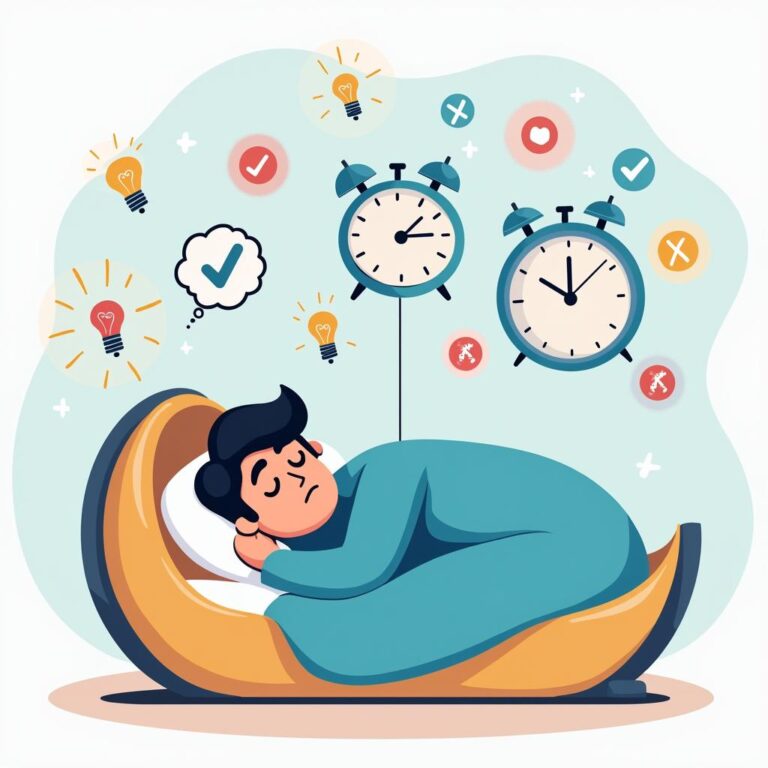In our fast-paced world, balancing productivity and wellness can feel like a constant juggle. One of the most effective tools in boosting productivity is the power nap. Yet, many struggle with understanding the optimal power nap length for maximizing benefits. This guide explores the best power nap length for productivity, providing insights into how a short sleep can energize your day.
Understanding Power Naps
A power nap is a short sleep that can improve alertness and performance. Unlike a full sleep cycle, which typically lasts about 90 minutes, a power nap is designed to be quick and efficient. It helps in restoring energy, enhancing cognitive function, improving mood, and boosting creativity without leading to sleep inertia—where you feel groggy and lethargic after waking up.
The Science Behind Napping
Research shows that a brief nap can enhance cognitive functions such as memory, attention, and decision-making. Napping makes it easier to manage cognitive workloads, making it particularly beneficial for people engaged in mentally demanding work. Neuroscientific studies suggest that napping can facilitate memory consolidation and learning processes, making it a powerful aid in our productivity arsenal.
Optimal Power Nap Lengths
The length of a power nap is critical. There are varying recommendations, but the most effective durations typically fall within these ranges:
10-20 Minutes
This short nap duration is commonly recommended for a quick boost in alertness and energy. Napping for 10-20 minutes allows your body to rest without entering the deeper stages of sleep. Waking from a light sleep phase ensures you feel refreshed rather than groggy. This duration is ideal for those who need a quick recharge, making it the best option for a quick productivity boost.
30 Minutes
A 30-minute nap can also be beneficial, but be cautious, as waking from this duration may leave you feeling slightly groggy. At this stage, you may enter the early stages of deeper sleep. While a 30-minute nap can help enhance memory and cognitive function, it poses a risk of sleep inertia. Therefore, this length is better suited for those who can afford a little longer wake-up period or who have the luxury of transitioning into their next task gently.
60 Minutes
Naps that last about 60 minutes allow you to enter deeper sleep, helping with memory recall and improving logical reasoning. However, waking up from this depth may lead to a stronger sense of grogginess. If your workload requires intense focus afterward, steering clear of the 60-minute mark might be wise unless you can factor in a relaxation period post-nap.
90 Minutes
A 90-minute nap allows for a complete sleep cycle, which involves moving through light sleep, deep sleep, and REM sleep. This duration can offer significant cognitive benefits, such as improved creativity and problem-solving skills. Yet, it’s not a traditional “power nap” and may not be practical during a typical workday. It is best saved for weekends or days off, when you can afford the time to reap its full benefits.
Best Practices for Effective Power Napping
Now that you know the optimal lengths for power napping, it’s essential to establish a conducive environment and routine to maximize the benefits. Here are some practical tips:
Find the Right Time
The best time for a power nap is typically early afternoon, around 1 PM to 3 PM. This timing helps to counteract the post-lunch dip in energy many people experience. Napping too late in the afternoon may interfere with nighttime sleep, so consider your schedule and aim for a time when your energy naturally wanes.
Create an Ideal Environment
To enhance the effectiveness of your nap, create a calming environment. Find a quiet, dark place where you can relax. If possible, use a sleep mask or blackout curtains to block out light. Consider earplugs or white noise machines to minimize interruptions and distractions.
Set an Alarm
To avoid oversleeping and sleep inertia, set an alarm for your desired nap length. Just a few minutes of rest can refresh your mind, but if you plan to sleep longer, ensure the alarm is set to your preferred time. This will prevent you from drifting into deeper sleep stages, allowing for a smooth transition back into your day.
Incorporate Breathing Techniques
Strategic relaxation techniques can help you fall asleep quicker. Try deep breathing exercises or mindfulness meditation to calm your mind before drifting off. These practices can ease tension and create a restful state, reducing the time needed to fall asleep.
Conclusion
The right power nap length for productivity ultimately depends on your individual needs and schedule. While 10-20 minutes is the classic power nap that most people find refreshing, experimenting with different durations can help you discover what works best for you. For optimal productivity, consider integrating regular power naps into your daily routine, balancing work and rejuvenation for sustained efficiency.
As we navigate through busy schedules and increased responsibilities, power naps can be a simple yet effective way to regain focus and enhance performance. By understanding the best power nap length for productivity, you can maximize your potential and improve your overall well-being.







